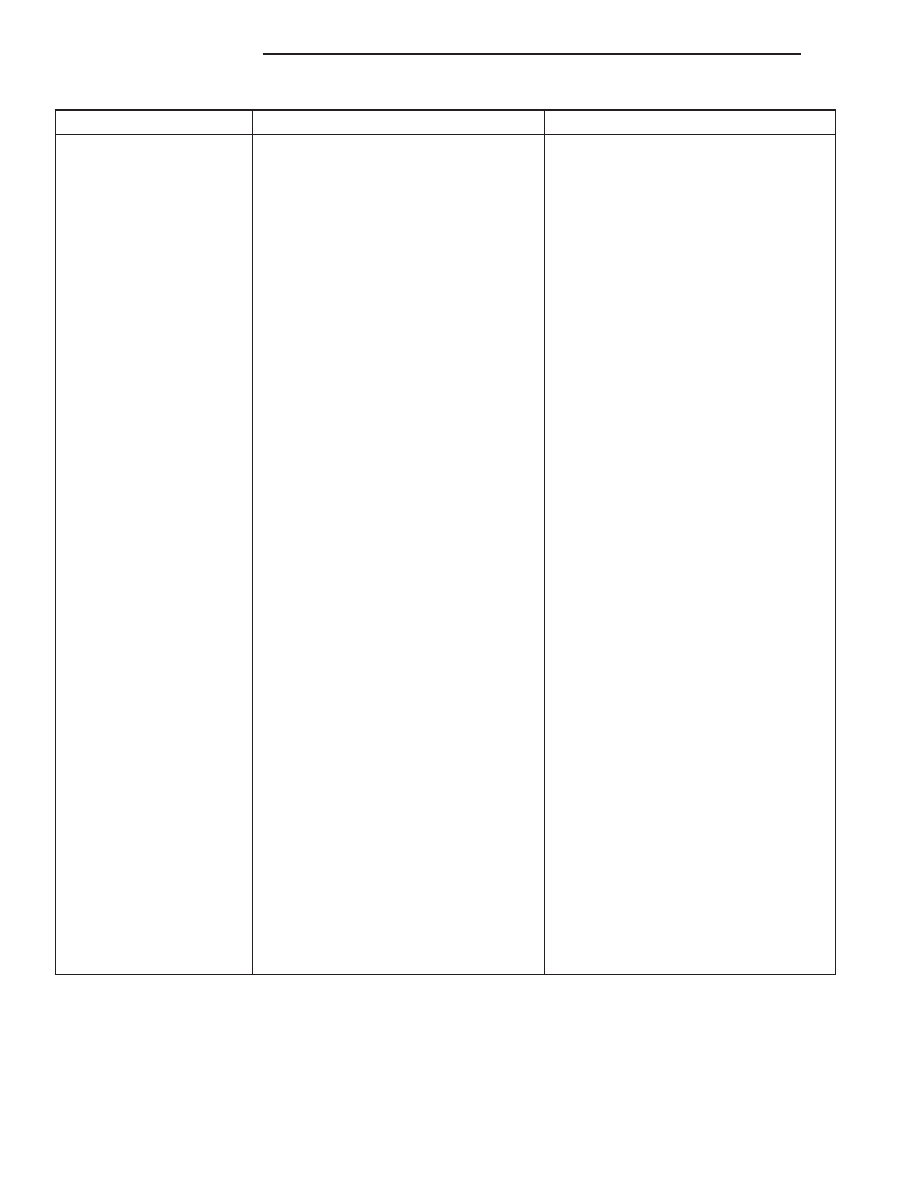Jeep Grand Cherokee WJ. Manual - part 63

CONDITION
POSSIBLE CAUSES
CORRECTION
TEMPERATURE GAUGE
READS HIGH OR
ENGINE COOLANT
WARNING LAMP
ILLUMINATES. COOLANT
MAY OR MAY NOT BE
LOST OR LEAKING
FROM COOLING
SYSTEM
1. Trailer is being towed, a steep hill is
being climbed, vehicle is operated in
slow moving traffic, or engine is being
idled with very high ambient (outside)
temperatures and the air conditioning is
on. Higher altitudes could aggravate
these conditions.
1. This may be a temporary condition
and repair is not necessary. Turn off the
air conditioning and attempt to drive the
vehicle without any of the previous
conditions. Observe the temperature
gauge. The gauge should return to the
normal range. If the gauge does not
return to normal range, determine the
cause for overheating and repair. Refer
to POSSIBLE CAUSES (numbers 2
through 18).
2. Defective temperature gauge (if
equipped)
2. Check gauge. Refer to Group 8E.
Repair as necessary.
3. Defective temperature warning lamp
(if equipped)
3. Check warning lamp operation. Refer
to Group 8E. Repair as necessary.
4. Coolant low in coolant reserve/
overflow tank and radiator?
4. Check for coolant leaks and repair as
necessary. Refer to Testing Cooling
System for Leaks in this group.
5. Pressure cap not installed tightly. If
cap is loose, boiling point of coolant will
be lowered. Also refer to the following
step 6.
5. Tighten cap.
6. Poor seals at radiator cap.
6. (a) Check condition of cap and cap
seals. Refer to Radiator Cap. Replace
cap if necessary.
(b) Check condition of radiator filler neck.
If neck is bent or damaged, replace
radiator.
7. Coolant level low in radiator but not in
coolant reserve/overflow tank. This
means the radiator is not drawing
coolant from the coolant reserve/
overflow tank as the engine cools.
As the engine cools, a vacuum is
formed in the cooling system of the
engine and radiator. If radiator cap seals
are defective, or cooling system has
leaks, a vacuum can not be formed.
7. (a) Check condition of radiator cap
and cap seals. Refer to Radiator Cap in
this group. Replace cap if necessary.
(b) Check condition of radiator filler neck.
If neck is bent or damaged, replace
radiator.
(c) Check the condition of the hose from
the radiator to the coolant tank. It should
fit tight at both ends without any kinks or
tears. Replace hose if necessary.
(d) Check coolant reserve/overflow tank
and tank hoses for blockage. Repair as
necessary
8. Freeze point of antifreeze not correct.
Mixture may be too rich.
8. Check antifreeze. Refer to Coolant
section of this group. Adjust antifreeze-
to-water ratio as required.
7 - 14
COOLING SYSTEM
WJ
DIAGNOSIS AND TESTING (Continued)